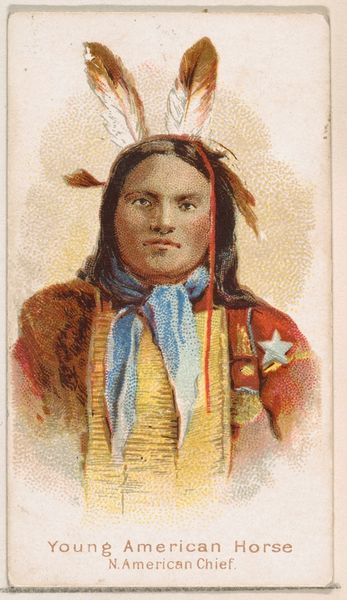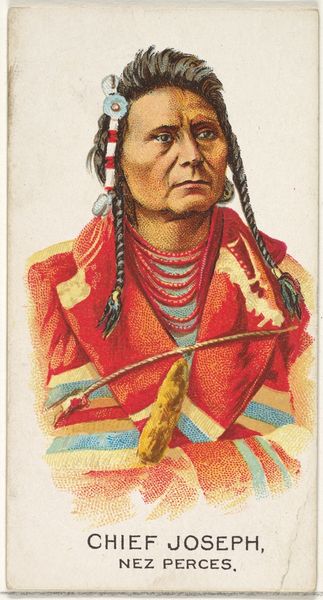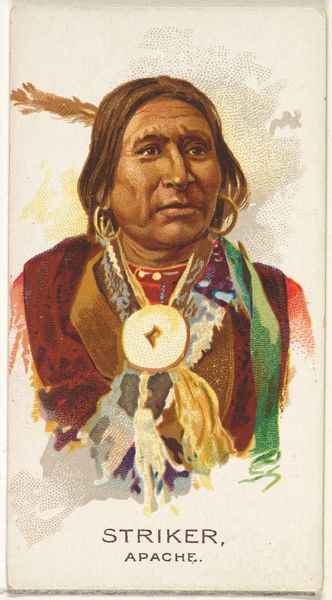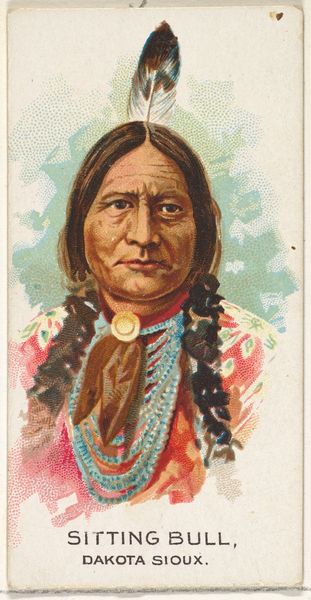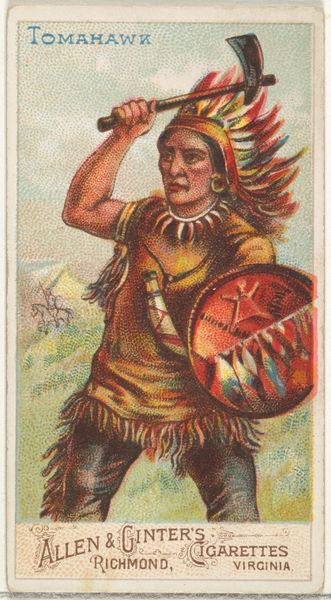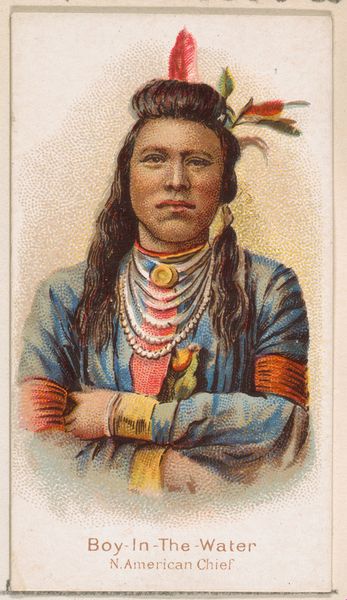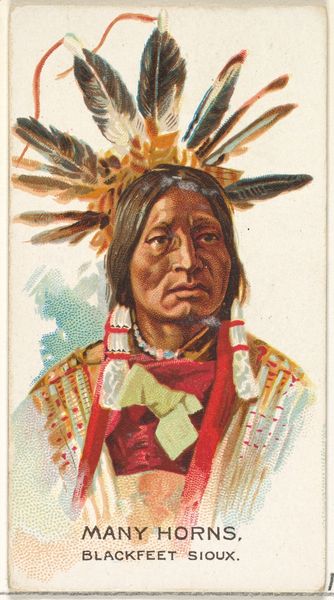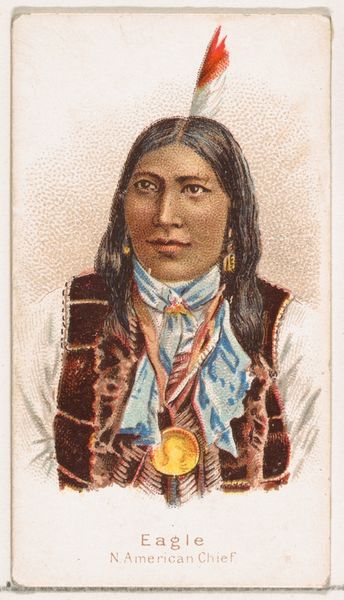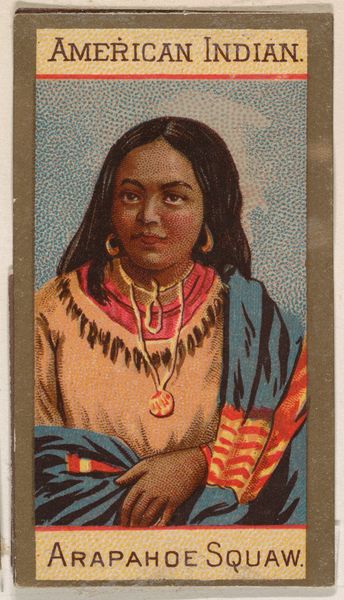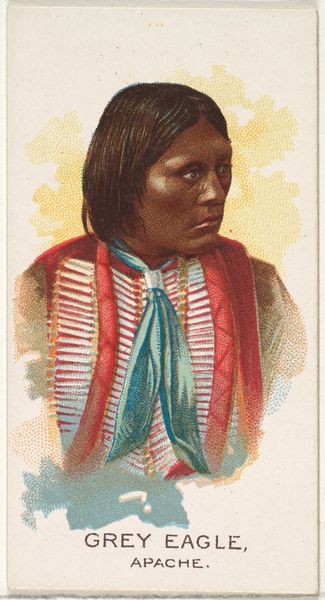
American Indian, from World's Smokers series (N33) for Allen & Ginter Cigarettes 1888
0:00
0:00
Dimensions: Sheet: 2 3/4 x 1 1/2 in. (7 x 3.8 cm)
Copyright: Public Domain
Curator: Immediately, the high-contrast colours strike me – the vibrant red and gold striped shirt against the almost-Tiffany blue of the chest covering. There's something unsettling about this brightness, knowing the history... Editor: That tension is valid. What we are observing here is a chromolithograph on paper. It’s entitled *American Indian*, and was part of the "World’s Smokers" series of N33 cards for Allen & Ginter Cigarettes dating to 1888. Now housed at The Met. These cards, initially incentives to purchase tobacco, circulated images and, with them, embedded cultural assumptions. Curator: Cultural assumptions, exactly! This romanticized "Indian" is far removed from the reality of the era. The figure, bedecked with feathers and ornamentation, is smoking a distinctly non-Indigenous pipe, which only intensifies the performative aspect. The painted red marks on the face also feel almost theatrical. Editor: Precisely, these cigarette cards operated as vehicles of popular knowledge, shaping public perceptions of race and culture, in a sense creating marketable archetypes for white consumption. Allen & Ginter were very calculated in how they presented exoticised "types". These cards weren't ethnographic documents but rather marketing tools that solidified stereotypical views. The individual depicted, despite the 'portrait' format, remains nameless and generic. Curator: It's the details too, like the pipe, the way the smoke curls artlessly. This isn't about respect or understanding of cultural practice, but about constructing an image. And there’s the strange juxtaposition of this posed “noble savage” with a mass-produced consumer product. A direct attempt to increase profits based on culturally appropriative and frankly, quite racist marketing strategies. Editor: Context is everything, as these cards contribute to a broader visual history that not only commodified Indigenous people but simultaneously erased their complex identities and lived realities through imposed popular stereotypes that conveniently masked policies of displacement. Curator: The ease with which this imagery was distributed and consumed must have had such a negative impact on public consciousness at the time, compounding other damaging narratives about Indigenous peoples in the U.S. Editor: Absolutely. Reflecting on this image and its wide dissemination then urges us to be far more discerning in deconstructing what purpose and message images such as these served and regrettably continue to serve.
Comments
No comments
Be the first to comment and join the conversation on the ultimate creative platform.
